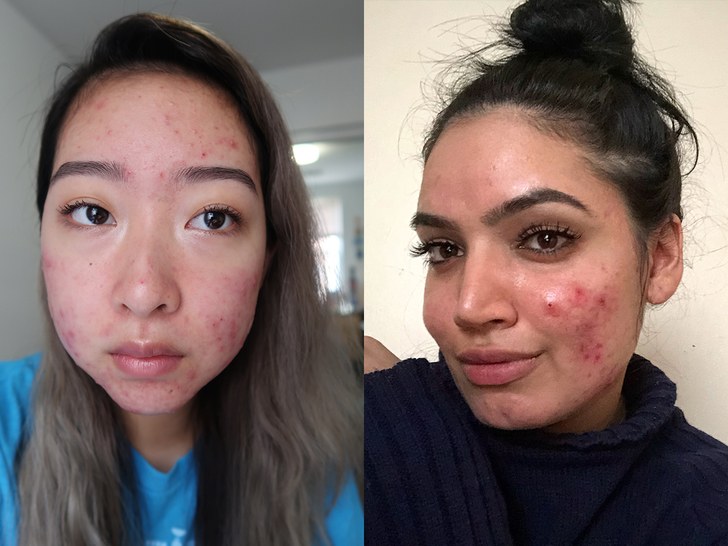Think acne is just about a few pimples here and there? Think again. Cystic acne is one of the most severe forms of acne, and it doesn’t just go away with a spot treatment. These deep, inflamed breakouts can be painful, persistent, and—if left untreated—can lead to permanent scarring.
Wondering what causes cystic acne and how to treat it naturally? Let’s explore what’s happening beneath your skin and how to calm the storm without harsh chemicals.
What Is Cystic Acne?
Cystic acne occurs when pores become clogged with oil, dead skin cells, and bacteria, leading to infection deep within the skin. The result? Large, red, swollen bumps filled with pus that often feel tender or painful to the touch. These “cysts” can rupture beneath the surface, triggering inflammation and scarring.
While cystic acne typically appears on the face, it can also affect the chest, shoulders, back, neck, and upper arms. It’s more common in teens and young adults but can affect anyone at any age, especially those with hormonal imbalances.
Common Causes of Cystic Acne
Several internal and external factors can trigger or worsen cystic acne. These include:
- Hormonal fluctuations (puberty, pregnancy, menstrual cycles, or birth control use)
- Heavy or greasy cosmetics
- Comedogenic lotions or cleansers
- High humidity and sweating
Certain medications can also contribute to cystic acne:
- Corticosteroids
- Lithium
- Phenytoin
- Isoniazid
Now that we’ve covered the causes, let’s talk about natural ways to treat cystic acne safely and effectively.
Natural Treatments for Cystic Acne
Here are four home remedies that are both gentle and effective at managing cystic acne.
1. Baking Soda
What You’ll Need:
- 2 tablespoons of baking soda
- Water
How to Use:
- Mix baking soda with water to form a smooth paste.
- Apply the paste directly to affected areas.
- Leave it on for up to 20 minutes.
- Rinse with lukewarm water. Use a clean, bacteria-resistant towel to dry the area gently.
- Repeat once or twice a week for best results.
Why It Works:
Baking soda helps remove excess oil and exfoliate dead skin cells. Its antibacterial and anti-inflammatory properties make it ideal for soothing active breakouts and preventing future flare-ups.
2. Benzoyl Peroxide
What You’ll Need:
- A face wash containing benzoyl peroxide
How to Use:
- Wash your face with the cleanser, focusing on areas prone to cystic acne.
- Use 2–3 times daily, depending on your skin’s tolerance.
Why It Works:
Benzoyl peroxide kills acne-causing bacteria and helps unclog pores. It also reduces inflammation and promotes skin healing.
Caution:
If you have sensitive or dry skin, start with a small amount and perform a patch test. Overuse may lead to dryness or irritation.
3. Apple Cider Vinegar
What You’ll Need:
- Raw, unfiltered apple cider vinegar
- Water (for dilution)
- Cotton buds
How to Use:
- Dilute apple cider vinegar with water if you have sensitive skin.
- Dab the mixture onto affected areas using a cotton bud—no need to press hard.
- Apply 2–3 times a day.
Why It Works:
Apple cider vinegar helps restore your skin’s natural pH and has antibacterial, anti-inflammatory, and astringent properties—making it an effective natural acne fighter.
4. Salicylic Acid
What You’ll Need:
- A gentle facial cleanser containing salicylic acid
How to Use:
- Use the cleanser to wash your face, focusing on acne-prone areas.
- Repeat twice daily for best results.
Why It Works:
Salicylic acid penetrates deep into pores to remove oil and dead skin cells. It also reduces inflammation and helps prevent new cysts from forming.
Caution:
If your skin is dry or sensitive, limit use to affected areas and monitor for irritation.
Final Thoughts
Cystic acne is stubborn—but not unbeatable. The key is understanding the root causes and choosing treatments that calm inflammation, kill bacteria, and keep pores clear. Natural remedies like baking soda and apple cider vinegar can be powerful allies when used consistently and carefully.
Still struggling with cystic acne? Consult a dermatologist to explore prescription options or customized skincare routines.
- How Automated Dispensing Cabinets (ADCs) revolutionized point-of-care medication administration? - November 23, 2021
- How to Select the Best and Most Affordable Fitness Tools - October 31, 2021
- What is Causing the Trend of Nursing Turnover and How to Stop It - August 24, 2021


